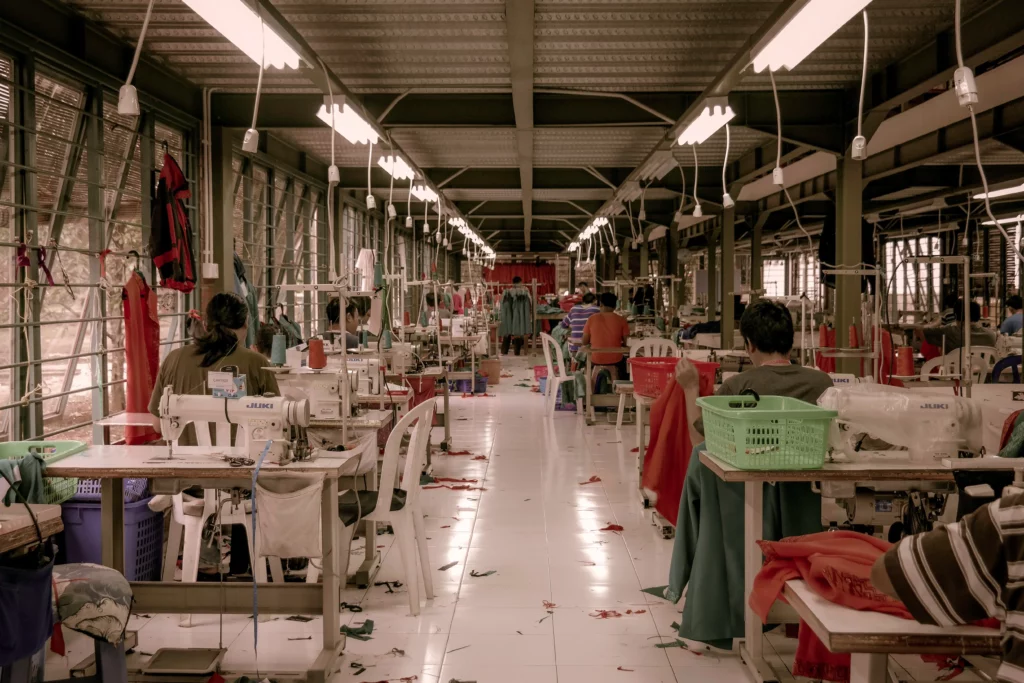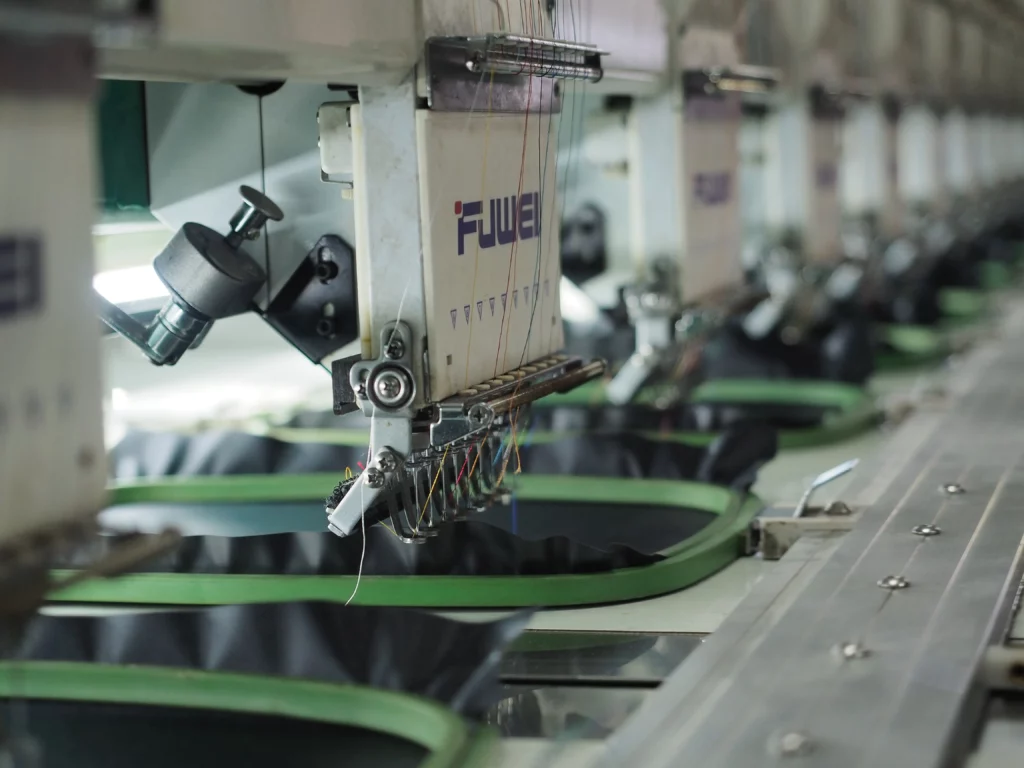Navigating the terrain of risk management in textile assurance can be complex, yet absolutely critical. This guide, outlined with 12 essential tips, provides a roadmap to help you take control, identify potential pitfalls, and implement effective strategies.
From understanding the nuances of quality assurance to implementing continuous monitoring, we delve into the crux of risk management. It’s not about avoiding risks entirely, but about being prepared, proactive, and strategic.
So, let’s go beyond the norm, provoke thought, and start a conversation around these practical and essential tips. Remember, managing risk is not a one-time act, but a continuous process.
Let’s ensure your textile assurance game is as tightly woven as the fabrics you produce.
Understanding Textile Quality Assurance
The manufacturer’s comprehension of Textile Quality Assurance plays a pivotal role in mitigating risks and ensuring the highest form of product integrity.
I mean, let’s face it, no one wants a shirt that unravels after one wash, right? Quality assurance, my friends, is not something to be taken lightly in today’s textile industry.
Now, let’s take a stroll down memory lane and talk about the evolution of assurance practices. Back in the good old days, textile assurance was pretty basic. But as the industry has evolved, so too have the practices.
It’s no longer enough to simply produce a product; now, there’s an emphasis on sustainable textile assurance.
Sustainable textile assurance, you ask? Yes, indeed! It’s all about ensuring that our beloved textiles are not only high-quality but also environmentally friendly. It’s about making sure that the materials used are sustainable, and the manufacturing processes are as green as possible. This new era of assurance practices is not just about ticking boxes; it’s about taking responsibility for our planet.
As manufacturers, it’s crucial to remember that our customers are intelligent, discerning, and increasingly eco-conscious. They demand control over their purchases and expect transparency about how their products are made.
Understanding Textile Quality Assurance is not just about mitigating risks or ensuring product integrity. It’s about evolving with the times, embracing sustainable practices, and ultimately, giving your customers what they crave: control, transparency, and peace of mind.
After all, who doesn’t love a guilt-free shopping spree?
Importance of Risk Identification
Risk identification is the linchpin in the wheel of textile assurance. Spotting potential hazards and mastering risk identification techniques can mean the difference between success and catastrophe.
Identifying Potential Hazards
In the realm of textile assurance, identifying potential hazards is a crucial first step in effective risk management. This is where hazard classification comes into play, categorizing threats to safety and quality control.
Now, imagine trying to solve a puzzle without seeing the picture. Pretty daunting, right? That’s what you’re doing if you’re not identifying hazards. Safety protocols are your best friend here; they’re the game plan, the roadmap. They guide us in handling risks, ensuring that no nasty surprises get in our way.
So, folks, remember, identifying hazards is not a step you can afford to skip.
Now, let’s don our detective hats and delve deeper into risk identification techniques in the next section.
Risk Identification Techniques
Building on the necessity of hazard identification, an equally critical aspect of risk management is the implementation of effective risk identification techniques.
- Risk Perception: Acknowledge varying viewpoints on risks and their potential impact. Understanding individual and group risk perceptions can shape effective identification strategies.
- Hazard Classification: Classify identified risks according to severity. This aids in prioritizing actions and allocating resources.
- Continual Monitoring: Keep an eye on the ever-evolving risk landscape. Real-time monitoring enhances the ability to identify new risks promptly.
- Involve All Levels: Encourage input from all levels of the organization. This promotes a comprehensive view of risks and nurtures a culture of shared responsibility for risk management.

Analyzing Potential Risks
Analyzing potential risks is a pivotal step in any risk management process, especially in the textile assurance field.
It’s not just about pinpointing the sources of risk, but also about evaluating the possible impacts and formulating effective mitigation strategies.
Ready to explore this complex, yet crucial, terrain together?
Identifying Risk Sources
A crucial initial step in textile assurance risk management encompasses the identification of numerous potential risk sources that could negatively impact the production process. This identification stage aligns with Risk Monitoring and Hazard Evaluation, where risks are not merely recognized, but also analyzed for their potential impact.
To gain control, consider these steps:
- Identify external and internal risk sources that could affect the production process.
- Categorize risks based on their likelihood and potential impact.
- Continuously monitor these risks and evaluate hazards to ensure preparedness.
- Implement mitigation strategies to manage the identified risks effectively.
Assessing Risk Impact
Following on from the identification of potential risk sources, it is imperative to delve into the assessment of risk impact, a process that meticulously evaluates the potential effects these risks could have on the textile production. Impact measurement methods are pivotal for accurate assessment, and risk impact forecasting is your crystal ball into the future of your operations.
| Potential Risk | Impact Measurement Method |
|---|---|
| Supplier Unreliability | Cost Increase Forecasting |
| Quality Control Failure | Production Delay Estimation |
| Operational Disruptions | Revenue Loss Projection |
| Regulatory Changes | Compliance Cost Analysis |
Feel that pulse racing? It’s the thrill of taking control! Remember, it’s not about eliminating risks – it’s about managing them. So, let’s tighten our grip and move onto the next exhilarating step: risk mitigation strategies.
Risk Mitigation Strategies
How can we proactively address potential risks in the textile industry? The answer lies in the effective use of Risk Mitigation Strategies.
These approaches, if properly utilized, can drastically minimize the impact of unforeseen issues.
- Risk Perception: Understand the risks and how your organization perceives them. This will aid in prioritizing risks.
- Crisis Management Plan: Develop a comprehensive plan to manage crises. This includes assigning roles and responsibilities.
- Risk Analysis: Regularly analyze potential risks and their impact on your operations.
- Risk Transfer: Identify risks that can be transferred to another party, like an insurer.
Remember, control is the key. The more control we have over our risks, the less they control us.
Now, let’s delve into implementing risk prevention measures.
Implementing Risk Prevention Measures
Implementing risk prevention measures in the textile assurance industry involves identifying potential threats and developing strategies to mitigate them effectively. It’s not just about slapping on some safety gear and hoping for the best. No, it’s about a comprehensive approach that aligns preventive equipment use with engaging staff awareness programs.
Let’s make it crystal clear. We are talking about an industry where the stakes are high, and there’s no room for gambling with risks. Ensuring the right equipment is used and maintained can save you from a catastrophic loss. It’s as simple as that! But, it’s not just the tools and machinery, it’s also the people operating them. That’s where staff awareness programs come into play.
It’s about creating a culture of safety, a culture where everyone is aware of the risks and knows how to respond. It’s about empowering your staff with knowledge and training. It’s about making safety a shared responsibility.
So, are you ready to take control? Ready to minimize risks and maximize assurance? It takes a bit of effort, but the payoff is tremendous. Not just in terms of preventing accidents, but also in terms of business continuity and reputation.
Remember, it’s not just about ticking boxes; it’s about genuine commitment to risk prevention. And that’s an investment worth making.
Now, let’s move on to discuss how the use of effective communication in risk management can further enhance your risk prevention strategies.
Effective Communication in Risk Management
A significant aspect of risk management in the textile assurance industry is effective communication, which plays a pivotal role in disseminating critical safety information and procedures to all employees. Communication, when executed correctly, can serve as a powerful tool in mitigating risks and ensuring a productive, safe work environment. However, communication barriers often pose challenges that need to be surmounted for success.
To effectively enhance communication in risk management, consider the following:
- Clear Message: Ensure that safety guidelines, rules, and risk-related updates are conveyed clearly. Avoid jargon and use simple, straightforward language.
- Active Listening: Encourage employees to listen actively and engage in discussions. This can enhance message interpretation and ensure that information is not lost or misconstrued.
- Feedback Mechanisms: Establish a system for feedback to assess if the message was understood as intended. Regular checks can prevent misunderstandings and ensure that all employees are on the same page.
- Overcoming Communication Barriers: Identify potential communication barriers within your organization, such as language differences or technological issues. Develop strategies to overcome these for smooth information flow.
Remember, communication is not just about speaking; it’s about ensuring that your message is received and understood. It’s about breaking down barriers, fostering understanding, and facilitating effective message interpretation.
As we delve deeper into risk management, the importance of regular quality inspections will become evident. In the next section, we will explore the best practices and tips for conducting these inspections to maintain the highest standards of assurance in the textile industry.
Regular Quality Inspection Tips
In order to ensure textile assurance, regular quality inspections are integral to your risk management strategy. Let’s cut to the chase, your inspection frequency needs to be as regular as clockwork. It’s like having your morning coffee; it needs to be done without fail to keep the system running smoothly. Irregular inspections? That’s a risk you simply can’t afford.
The key is to be proactive, not reactive. Waiting for a problem to arise and then dealing with it is like closing the barn door after the horse has bolted. It’s too late! Instead, keep a keen eye on your textile testing methods. Are they up to date? Are they giving you the accurate results you need? If you’re unsure, it’s time to take control and shake things up.
Quality inspections aren’t just about ticking boxes. No, they’re about relentless pursuit of perfection. They’re about refining and enhancing your textile testing methods. They’re about catching the small issues before they become big headaches. It’s about understanding that skipping one inspection might lead to a chain reaction of unforeseen risks.
To wrap it up, regularity and precision in your inspections are your secret weapons against risk. Unpredictability is the enemy, and your rigorous inspection frequency is the shield against it. Keep that shield strong, and you’ll maintain control, ensuring textile assurance in the long run.
After all, the power is in your hands. So, are you ready to take control?
Documentation for Quality Assurance
The second crucial element in your textile assurance strategy is documentation for quality assurance. This serves as concrete proof of your rigorous inspection practices and adherence to set Assurance Standards. In this era of competitive markets, it’s no longer sufficient to proclaim your commitment to quality. You need to show it, demonstrate it, and let the paperwork speak volumes for your dedication.
Consider documentation as your secret weapon in the quest for quality. It’s the tangible evidence that your organization is not just talking the talk but also walking the walk in terms of Quality Metrics. In this regard, here are four essential elements to consider:
- Record of Inspections: Detail every inspection you carry out, noting what was tested, the results, any deviations from the standard, and corrective actions taken.
- Standards Compliance: Maintain records that show your compliance with local and international Assurance Standards. This includes certifications, licenses, and adherence to regulatory guidelines.
- Training Documentation: Keep records of staff training on quality assurance procedures. This serves as proof of your commitment to continuous improvement and workforce competence.
- Customer Feedback: Document any feedback from customers, good or bad. This offers insights on how your products are received in the market and provides areas to improve on.
Utilizing Risk Assessment Tools
So, you’ve got your risk management strategy in place, but how are you assessing these risks in your textile business?
The choice of the right risk assessment tools is critical and their effective application can make a huge difference.
Let’s talk about how you can do just that and turn potential pitfalls into stepping stones for success.
Choice of Tools
Selecting appropriate risk assessment tools is a critical step in managing potential hazards in the textile assurance process. Tool selection and technology integration play a crucial role in ensuring that the chosen tools are effective, efficient, and in line with the company’s needs and objectives.
- Understanding Needs: Determine what your organization requires from risk assessment tools before choosing.
- Functionality: Ensure the tools can address the identified risks with the necessary precision.
- Ease of Use: The tools should be user-friendly; complex tools can lead to misinterpretation and errors.
- Technology Integration: The chosen tools should integrate smoothly with existing technology infrastructure.
Effective Tool Application
An effective application of chosen risk assessment tools is paramount in enhancing the reliability and efficiency of risk management within the textile assurance process. The selection and integration of risk software should be strategic, allowing for comprehensive and real-time risk tracking, mitigation, and response.
Here’s a quick glance at a typical risk software tool selection process:
| Step | Activity | Outcome |
|---|---|---|
| 1 | Tool Requirement Identification | Identifying needs and constraints |
| 2 | Market Research | Comparing available software |
| 3 | Selection | Choosing the best fit |
| 4 | Integration | Implementing the tool system-wide |
| 5 | Review & Improvement | Periodic assessment and enhancement |
Remember, the tool is just as good as its application! Stay in control by making informed decisions and using your tools effectively.
Now, let’s move on to the equally significant aspect of ‘training for risk management’.

Training for Risk Management
While implementing robust risk management strategies is crucial, ensuring employees are adequately trained to handle these risks is equally essential in the textile assurance industry. Risk Training Methods and Employee Involvement in Risk Management are two key components that can drive a successful risk management culture.
Let’s discuss a few strategies to foster this culture and effectively train your employees:
- Hands-on Training: Experiential learning can be incredibly effective. Employees should be given opportunities to participate in risk management simulations or role-plays. This allows them to understand the real-world implications of risks and the importance of their mitigation.
- Regular Workshops and Seminars: Organize frequent workshops to discuss the latest risk management trends and techniques. Inviting industry experts to these sessions could offer employees fresh perspectives and insights.
- Online Learning Platforms: Leverage e-learning platforms to offer flexible and interactive learning experiences. Online courses on risk management can be taken at an individual’s pace, allowing them to effectively absorb the material.
- Employee Involvement: Encourage active participation from employees in risk discussions and decision-making processes. This not only empowers them but also provides a sense of ownership and accountability.
The most successful companies in textile assurance take a proactive approach to risk management training. They understand that well-trained employees are their first line of defense against potential risks.
As we transition into our next discussion on mitigation strategies in textile assurance, remember this: a well-trained workforce is not just a necessity—it’s a competitive advantage.
Mitigation Strategies in Textile Assurance
Numerous mitigation strategies exist in textile assurance, each aiming to minimize potential risks and enhance the overall quality of textile products. These strategies aren’t just fancy safety nets, but rather, they’re a deliberate response to the uncertainties in this industry.
One key strategy is embracing Assurance Regulations. These aren’t just hoops to jump through – they’re your new best friends. They provide a structured framework for identifying, assessing, and managing risks. They’re like a game plan that can help you navigate through the unpredictable terrain of textile assurance.
Another influential strategy is incorporating Sustainable Practices. Think of it as two birds with one stone: you’re not only reducing environmental impact, but also mitigating potential risks. For instance, using less water and energy in production processes can decrease the risk of resource depletion and associated cost hikes.
But let’s not stop here. The goal isn’t merely to comply with regulations or adopt a few sustainable practices. The real challenge, and opportunity, is to embed these strategies into the core of your business operations. That’s when you’ll start witnessing significant improvements in quality and reductions in risk.
Risk management is not a one-off task, but an ongoing process. Yet with the right mitigation strategies in place, it becomes less about firefighting and more about strategic planning and control.
Reviewing and Updating Risk Policies
Even though risk management strategies are embedded into the core of business operations, it is crucial to periodically review and update risk policies to adapt to the ever-evolving challenges and uncertainties in the textile industry. This is not a mere bureaucratic formality, but a strategic necessity to stay ahead of the game.
Consider this, you wouldn’t use a map from the 1800s to navigate today’s world, would you? Likewise, relying on outdated risk policies can lead your business astray, exposing you to unforeseen pitfalls and policy loopholes.
Now, the question arises, what should this review and update process look like? Here’s a quick rundown:
- Conduct a thorough risk assessment: Identify new risks in the environment and assess how they impact your business.
- Engage stakeholders: Stakeholder involvement is crucial. Their insights can enrich your understanding of risks and help in policy formulation.
- Identify and close policy loopholes: Outdated policies may have loopholes that can be exploited. It’s time to seal these gaps and strengthen your defense.
- Communicate and train: Once updated, communicate the new policies to all staff and provide necessary training.
The textile industry is a dynamic landscape, with new patterns emerging every day. Risk management is not a one-and-done exercise, but a continuous process. It’s about being proactive, not reactive. So, roll up your sleeves and get ready to dive into your risk policies. They may be gathering dust, but with a little polish, they can shine again, guiding your business toward a secure future.
Benefits of Continuous Monitoring
A significant advantage of continuous monitoring in risk management is its capacity to provide real-time data, which greatly enhances decision-making accuracy and efficiency in the textile assurance industry. This isn’t just a cool feature to have—it’s a game changer. Imagine a ship’s captain steering without a compass. That’s how decision-making feels without continuous monitoring.
Monitoring equipment effectiveness becomes a breeze. No more second-guessing if the loom is running at top-notch efficiency or if the dye vats are maintaining optimal temperatures. Real-time data from continuous monitoring provides that information on-the-go. It’s like having a health check-up for your equipment every second of the day. And the best part? You don’t have to wait for an annual review to detect a problem. You see it, you fix it—bada bing, bada boom!
Adapting to industry changes also becomes less of a guessing game. Continuous monitoring allows you to spot trends and adjust operations in real-time. Seeing a sudden spike in cotton prices? Shift production to a more cost-effective fabric. Is a particular color palette trending? Adjust dyeing operations accordingly. It’s like having a crystal ball that glimpses into the future of the textile industry.
In the end, continuous monitoring in risk management is about control. It’s about staying ahead of the curve, knowing your ship like the back of your hand, and steering it confidently through the ever-changing waters of the textile industry. Because let’s face it, no one likes to be left in the dark, especially when control is within reach.
Conclusion
In conclusion, the world of textile assurance is not for the faint-hearted. The agility to manage risks, the wisdom to identify them, and the courage to mitigate them are essential.
As we navigate this labyrinth of risks, may we remember that a stitch in time not only saves nine but also ensures quality.
Here’s to the unsung heroes of the textile industry, toiling away behind the scenes, who turn threads into tapestries of success.




